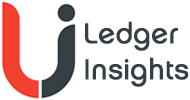ClearToken is a London-based startup that originally aimed to become a central counterparty (CCP) for institutional digital asset trading. Its backers include Nomura’s Laser Digital, Zodia Custody, Flow Traders, LMAX Digital and GSR. It recently published the first chapter of its whitepaper, which highlights an evolution in its thinking. ClearToken’s ambition has expanded from being a CCP to becoming a central securities depository (CSD). We suspect that’s a lot to do with achieving legal finality of settlement.
“DvP (delivery versus payment) settlement system operators are typically regulated intermediary FMIs such as CSDs and in FX markets CLS Group provides a payment versus payment (PvP) mechanism,” the startups writes.
The alternatives are to settle via a centralized exchange or prime broker, to settle directly on chain, or to use a single venue clearinghouse, such as Citadel Securities’ backed EDX Markets. A key benefit of a CCP over a single venue clearinghouse would be less fragmented liquidity. The paper focuses on the drawbacks of the other two options.
The drawbacks of on-chain settlement
In exploring settlement risks, the whitepaper reads somewhat like a ‘Nightmare on crypto Street’. It highlights many drawbacks of on-chain settlement, particularly the downsides of instant atomic settlement, which settles gross. Traditional finance (TradFi) is accustomed to the benefits of netting. That’s widely appreciated, and there has been some exploration of hourly netting. As a CSD, ClearToken plans multiple intraday settlement cycles and to operate 24/7.
Another topic is block times and finality. It notes Bitcoin’s average block time of ten minutes, which means it takes an hour for the transaction to become final. We’d note that Custodia Bank CEO Caitlin Long has previously warned that a lack of appreciation of blockchain settlement risks could scupper a major bank. ClearToken plans to address the finality of settlement in the yet-to-be-released second chapter, but we believe it will be based on book entries rather than blockchain finality.
The whitepaper also explores some of the drawbacks of on-chain settlement such as blockchain interoperability requiring cross chain bridges that have proven risky, highlighting one particular hack (Wormhole).
The most popular trading pair is BTC/USDT, which is always cross chain. There’s no question that bridges are risky. But to provide some balance, security has improved. According to data from Hacken, bridge losses amounted to $1.9 billion in 2022, $338 million in 2023 and $114 million in 2024.
We’d make an observation regarding tokenized securities. If the blockchain has short settlement times and the digital cash is on the same chain, then settlement risks are reduced. For example, the SIX Digital Exchange settles transactions using a wholesale CBDC on the SDX blockchain. Additionally, the soon-to-launch 21X (under the EU’s DLT Pilot Regime) will trade digital securities against stablecoins on the Polygon blockchain. Compared to crypto, the current low volumes don’t justify netting.
The risks of centralized exchanges
With the spate of bankruptcies following the collapse of Terra/Luna as well as the collapse of FTX, the counterparty risks are rather obvious. Not to mention, Bybit’s recent $1.5 billion hack, although it had the reserves to cover the loss.
ClearToken highlights that “simultaneous settlement instructions does not mean simultaneous settlement is achieved,” pointing to the lengthy block times. Centralized exchanges also suffer from the same prefunding requirement as on-chain settlement.
There’s also the risks involved in not using central bank money for settlement. While it mentions the potential for a synthetic CBDC, perhaps an indirect reference to Fnality’s settlement tokens, it notes that this may not be available to all market players, because it may only be available to institutions that already have access to central bank money. ClearTokens plans to use central bank money.
The whole point of a CSD is to reduce risk, so the whitepaper is highlighting the many current pitfalls involved in digital asset settlement. Most of the points are perfectly valid. However, if the reader were new to the sector, such as someone in the risk department of a bank who doesn’t have any experience or context, they might conclude that their institution should not touch digital assets.
As much as a CSD has advantages for institutional participation in crypto, we need to be aware of the consequences if CSDs continue to be a requirement for all digital securities. As 21X will show, it will be possible for retail investors to transact and settle directly without brokers in a regulated environment. Blockchain is intended to support automation, efficiencies and innovation. There’s a risk of imposing the baggage from legacy systems onto the new rails and constraining the potential benefits.






